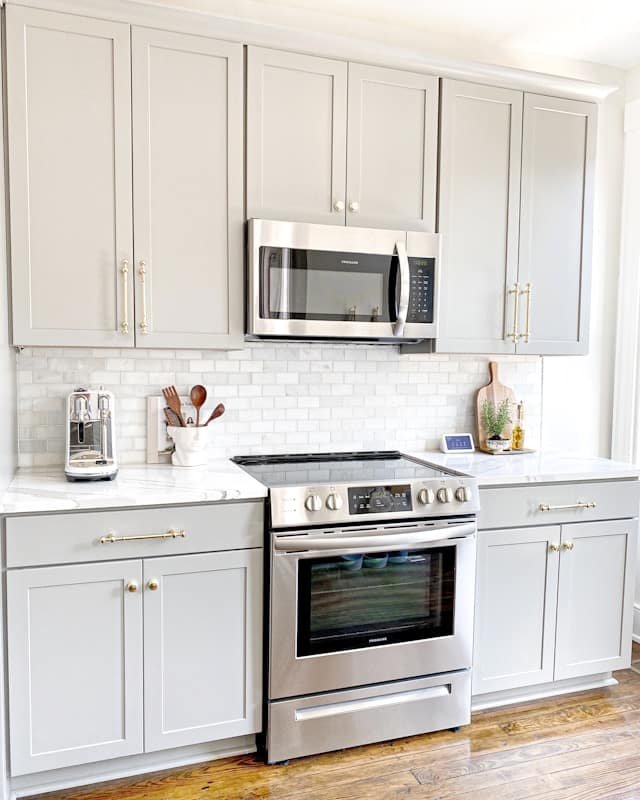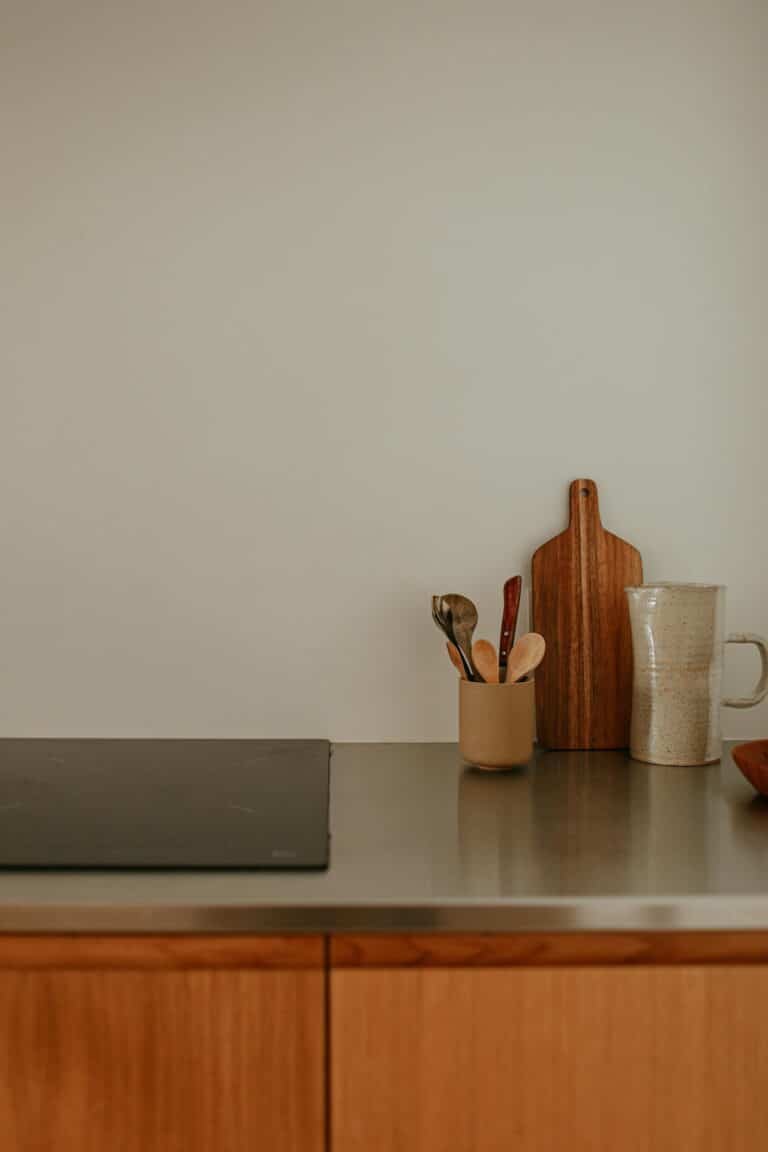25+ Effective Cleaning Hacks You Won’t See All Over the Internet
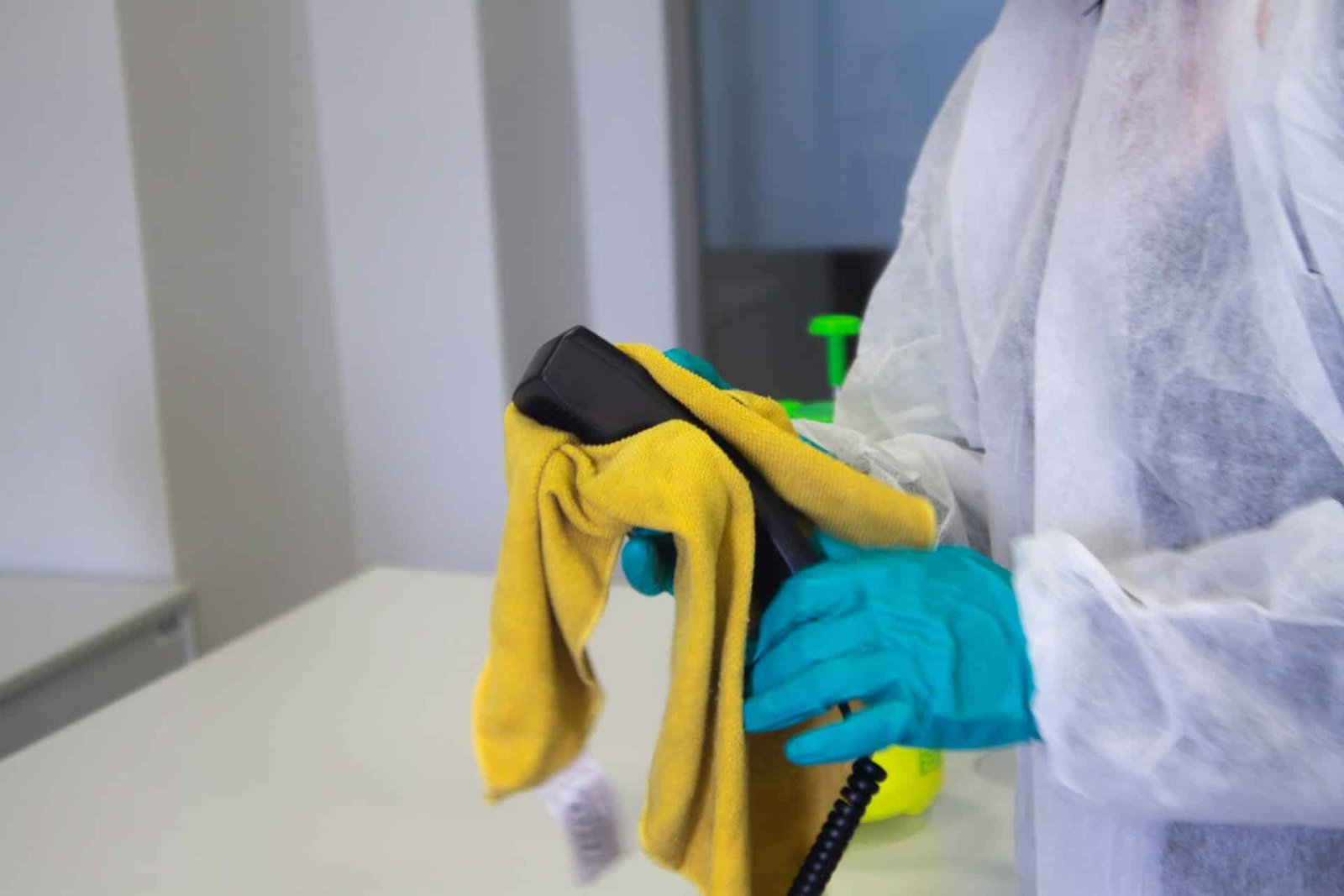
If you’ve ever found yourself scrubbing the same spot over and over again or just feeling stuck in your cleaning routine, I get it. I’ve been there too; until I started trying out a few cleaning hacks I came across online.
And honestly, some of them completely changed the game for me.
It’s amazing how little tricks work in unexpected ways, or repurposing items you already have at home, can make such a big difference.
So in this post, I’m sharing some of my favorite cleaning hacks that have made my life easier, and I hope they’ll help you too!
This post may contain affiliate links!
1. Actual Cleaning Products
This isn’t exactly a cleaning hack, but it’s something I’ve learned over time and just had to share. Instead of trying out ten different DIY mixtures and ingredients, it’s honestly better to invest in a high-quality cleaner made for the job.
You can rely on baking soda, vinegar, and all those “natural” combinations. And while they do work for some things, they’re not a magical solution for every cleaning task.
Sometimes, all you need is a good cleaner that’s already designed to tackle the mess. For example, the Lysol All-Purpose Cleaner is so easy and effective. You just spray it and wipe. No mixing, no guesswork, and no extra steps.
Yes, it might cost a little more than vinegar or baking soda, but the difference is small and the time you save is totally worth it.
So while natural solutions have their place, I’ve found that a good, ready-to-use cleaner can make cleaning so much easier and a lot less stressful.
2. A Rolling Cleaning Cart
Instead of going back and forth to grab supplies from different rooms, keeping a small rolling cart stocked with essentials can make cleaning so much easier.
Fill it with things like microfiber cloths, an all-purpose cleaner, glass spray, disinfecting wipes, a duster, and gloves.
The idea is to have everything you need in one place so you can move from room to room without stopping.
It saves time, keeps you focused, and helps you get through your cleaning routine more smoothly. I tried this once out of curiosity, and it made a bigger difference than I expected.
3. Exfoliating Gloves
This might sound odd at first, but exfoliating gloves aren’t just for skincare.
Wearing them while cleaning can be a total game-changer. Slip them on (you can even double up on one hand for extra scrubbing power) and use your hands as the scrub.
They work surprisingly well for doing dishes, cleaning the sink, or scrubbing the bathtub.
Since you’re not gripping a sponge or brush, it saves a lot of effort and makes it easier to reach tricky spots with one finger.
4. A Power Scrubber
Scrubbing surfaces by hand can take a lot of time and energy, especially when dealing with stubborn grime in the bathroom or kitchen.
Investing in a power scrubber can make a big difference. It’s a tool that uses rotating brushes to clean surfaces more efficiently than manual scrubbing.
You can find handheld models or even brush attachments that work with a regular drill. It works great on tiles, grout, tubs, sinks, and more. Instead of scrubbing for ages, let the tool do the work.
5. Hot Water Bucket
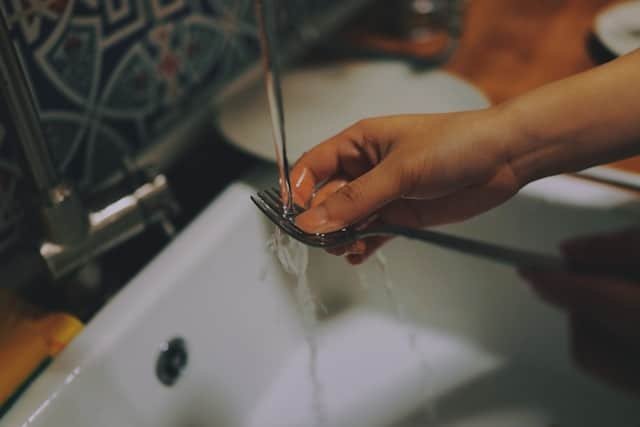
Before starting the dishes, fill a bucket or your sink with hot water that’s comfortable enough to touch.
Add some dishwashing liquid and let the dirty dishes soak for a few minutes.
The heat and soap help loosen grease and stuck-on food, making everything much easier to clean.
After soaking, wear an exfoliating glove and gently scrub the dishes.
Then rinse with warm or fresh water. This simple step can cut your dishwashing time in half and makes the whole process feel a lot less tiring.
6. A Butter Knife
Some spots are just too narrow for a cloth or sponge to reach. To clean those tight gaps, wrap a butter knife with a paper towel or a thin cloth and gently slide it into the space.
This works really well for areas like the edges of window tracks, gaps between stove and counter, sliding door tracks, or the seams around faucets.
You can spray a bit of cleaner on the towel before wrapping it for better results.
7. Citric Acid (A Stronger Alternative to Vinegar)
If you usually clean with vinegar but find it doesn’t always do the trick, citric acid is a great alternative.
It’s stronger, still natural, and works wonders on tough stains like limescale, hard water spots, and soap scum.
Just dissolve a spoonful of citric acid powder in warm water and spray it on the area.
8. Use Cold Water
If you’ve ever struggled to clean cooked egg off a stainless steel pan, here’s a simple trick.
Instead of using hot water, rinse the pan with cold water first. The egg releases much more easily, making cleanup quicker and less frustrating.
Hot water can actually make the egg stick more, while cold water helps it loosen.
9. Steam the Kitchen
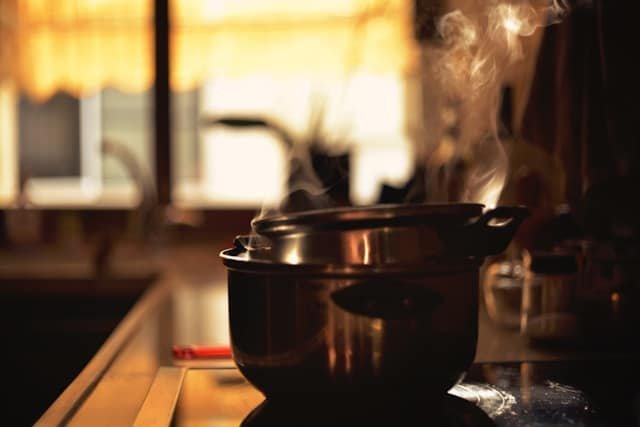
Before you start scrubbing tough spots in the kitchen, try this simple trick.
Boil a pot of water on the stove and close the kitchen door to let the steam build up.
The steam helps loosen grease and grime on surfaces, making them easier to clean.
If you live in a warm climate, it’s best to open the windows and door afterward to let the space cool down.
Avoid this method in very hot weather, as it can quickly become uncomfortable.
10. Use Enzyme Cleaner
Many people assume enzyme cleaners are only for pet messes, but they actually work on a wide variety of organic stains.
They’re great for cleaning food spills, baby spit-up, milk, wine, juice, blood, sweat, vomit and diaper accidents.
Enzyme cleaners break down stains at the source, helping to remove both residue and odor completely.
They’re great for carpets, mattresses, upholstery, and laundry too. If you’ve ever struggled with lingering smells or stubborn stains, this is worth trying.
One of the best-rated options is Biokleen Bac-Out Enzyme Cleaner. It’s plant-based, safe for most surfaces, and easy to use.
How to use an enzyme cleaner for organic stains:
- Blot up any excess liquid or mess.
- Spray the stained area generously with the enzyme cleaner.
- Let it sit for at least 10 to 15 minutes.
- Gently blot or wipe the area clean.
- Allow it to air dry completely.
You can repeat the process for tougher or older stains.
11. Sanitize a Cutting Board
For a quick and natural way to sanitize your cutting board, try using a lemon or orange.
Cut the fruit in half, sprinkle a little salt or baking soda on the board, and use the cut side to scrub. The natural acidity helps disinfect the surface while the salt adds gentle scrubbing power.
It works well on wooden and plastic boards and leaves them smelling fresh too.
This is especially useful after cutting meat, onions, or garlic. Let it sit for a few minutes, then rinse with warm water.
12. Vacuum the Drawers
Before wiping out dusty or crumb-filled drawers, use the small nozzle attachment on your vacuum to suck up loose debris. It’s quicker and prevents crumbs from spreading around.
You can also slide a toilet paper roll tube onto the vacuum hose to reach into narrow corners or oddly shaped spaces. Just press the end of the tube into the shape you need; it bends easily and helps you clean tight spots.
13. Clean the Blender
Instead of scrubbing around sharp blades, fill your blender halfway with warm water, add a drop of dish soap, and blend for 20 to 30 seconds.
The soapy water swirls around and lifts off any leftover food or residue.
After blending, rinse it out with clean water and let it air dry. It’s quick, safe, and saves you from reaching into tricky corners.
14. Dish Soap and Rubbing Alcohol
If you’re dealing with burnt food stuck to your pan, this simple method can help.
Fill the pan with about an inch of water, add one teaspoon of dish soap, and pour in a quarter cup of rubbing alcohol. Let it simmer gently for around five minutes.
The heat loosens the residue, while the rubbing alcohol helps break down the stubborn, carbonized food. After that, the burnt bits wipe off much more easily, with less scrubbing needed.
15. White Bread to Dust
For fragile or hard-to-clean items like porcelain, carved decor, or keyboards, white bread can be surprisingly useful.
Gently press a slice of soft white bread onto the surface to lift dust and dirt. It works almost like a gentle lint roller without scratching or damaging delicate finishes.
This trick is especially helpful for textured or detailed pieces where clothes can’t reach. Just be sure to use fresh, soft bread.
16. Use a Coffee Filter
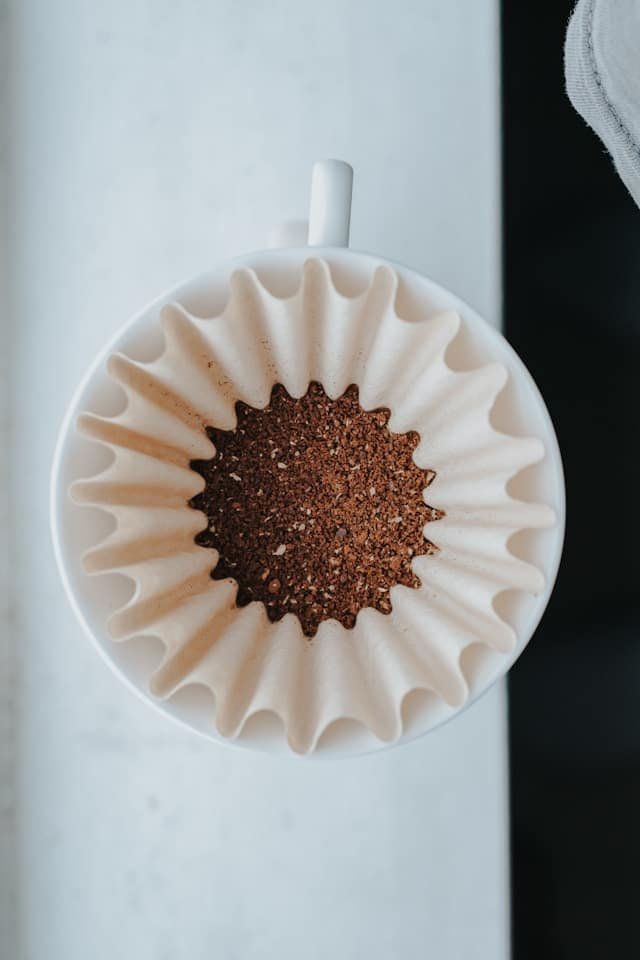
If microfiber cloths leave lint and paper towels leave streaks, try using a coffee filter instead. It’s lint-free, gentle, and absorbs oils beautifully.
Wipe down stainless steel appliances, mirrors, or glass surfaces with a dry coffee filter for a clean, streak-free finish.
It’s especially handy for quick touch-ups or polishing without any extra sprays. Keep a few in your cleaning caddy, they’re simple, affordable, and surprisingly effective.
17. Use Hair Conditioner
Hard water stains on chrome or glass can be frustrating, but there’s a simple fix.
Apply a small amount of hair conditioner to faucets or shower doors, rub it in gently, then wipe it off with a clean cloth.
18. Clean Stove Knobs Without Removing Them
Stove knobs can collect grime around the base, but removing them isn’t always necessary. Soak a cotton pad in isopropyl alcohol and wrap it around the base of the knob.
Hold it in place with a rubber band and leave it for 5 to 10 minutes.
Once the grime has loosened, twist the knob a few times and wipe it clean. For tighter spots, use a cotton bud or toothpick to reach into small gaps.
19. Vacuum Funnel
Need to clean crumbs or dust from tight corners? Take an empty toilet paper tube, flatten one end, and fit it onto your vacuum hose.
The soft cardboard can be shaped to reach narrow spaces like drawer corners, keyboard trays, windowsills, or even under fridge coils.
20. Air Vents with Conditioner
Apply a small amount of hair conditioner to a soft cloth and wipe over clean metal air vents.
The light coating helps repel dust and releases a gentle scent when air passes through.
It works best on bathroom or hallway vents. Just be sure to wipe off any excess.
21. Frozen Lemon Cubes
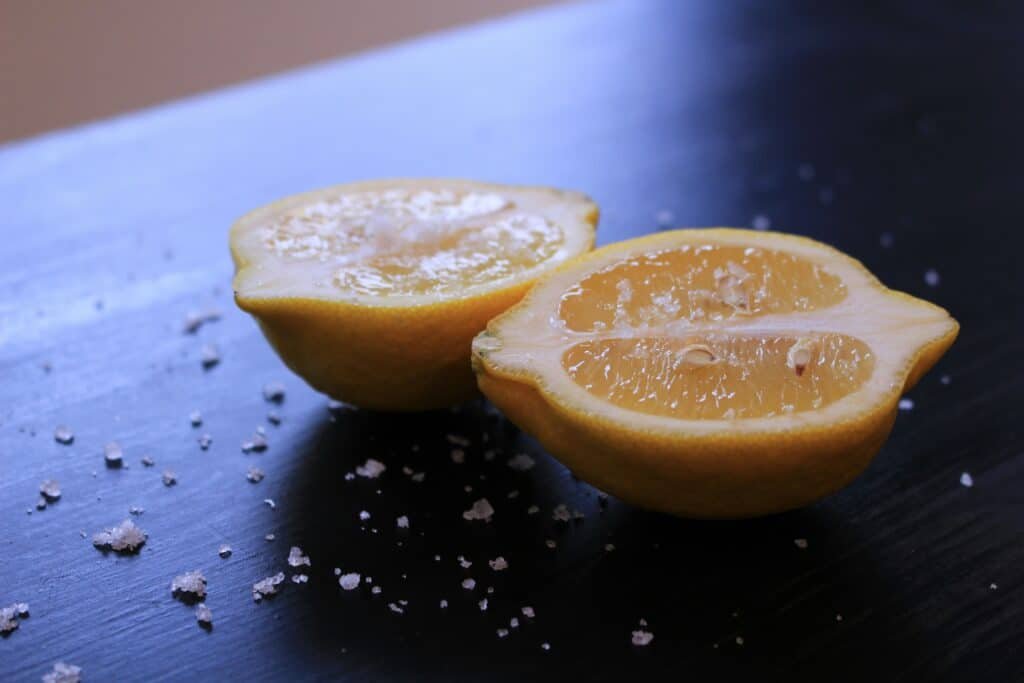
Freeze a mix of lemon juice, vinegar, and water in an ice cube tray to make ready-to-use microwave cleaning cubes. Whenever your microwave needs freshening up, pop one cube into a microwave-safe bowl and heat it for 2 minutes. The steam loosens grime and neutralizes odors, making it easy to wipe clean.
Make a batch at once and keep them in your freezer for effortless, no-prep cleanups.
22. Tea Bags
Don’t toss those used tea bags just yet. Once they’ve dried completely, place a few inside small mesh or muslin bags and tuck them into your drawers.
The porous texture of tea leaves helps absorb odors and even attracts fine dust.
23. Ruler and Sock
Crumbs and dust love to hide deep in couch seams and corners. To reach them without unzipping cushions, wrap a slightly damp sock around a ruler and slide it into the cracks.
The sock grabs onto debris, while the ruler helps you reach into tight spots.
24. Reverse Mop
Cleaning walls and ceilings can be tricky, especially without a ladder. A simple trick is to wrap a microfiber cloth around a clean paint roller and secure it with clips or pins.
Lightly spray the cloth with your favorite cleaning solution, then roll it over walls, ceilings, or baseboards.
It picks up dust, cobwebs, and light stains without bending, stretching, or climbing.
This method is great for high or hard-to-reach spots and saves time and energy. Use a long-handled roller to make the job even easier.
25. Baby Wipe
Place a loosely opened pack of baby wipes inside your shoe cabinet.
The gentle scent slowly releases into the space, helping to keep it smelling clean without strong deodorizers.
They won’t clean on their own, but having them within reach makes it super easy to wipe down shelves or dusty shoes as you spot them.
26. Newspaper
Dust loves to settle on hard-to-reach cabinet tops, but cleaning them isn’t fun. Try lining the top of your cabinets with a layer of newspaper or brown paper.
It catches dust and grease over time, and when it gets dirty, you can just toss and replace it; no scrubbing needed.
Sometimes, it’s the little things that make the biggest difference.
These simple cleaning hacks might seem small, but they can save you time, make chores easier, and even make your home feel fresher without much effort.
Try a few of them and see how quickly things start to feel more manageable. A few smart tricks here and there really do go a long way!
Read more:
- 20 Surprisingly Easy Bathroom Cleaning Hacks That Leave No Dirt Behind
- 20+ Practical Kitchen Cleaning Hacks That Go Way Beyond the Basics
- How To Organize Your Room And Always Keep It That Way
- 15 Shockingly Simple Habits Of People Who Keep Their House Clean All The Time
- 25+ Effective Cleaning Hacks You Won’t See All Over the Internet
